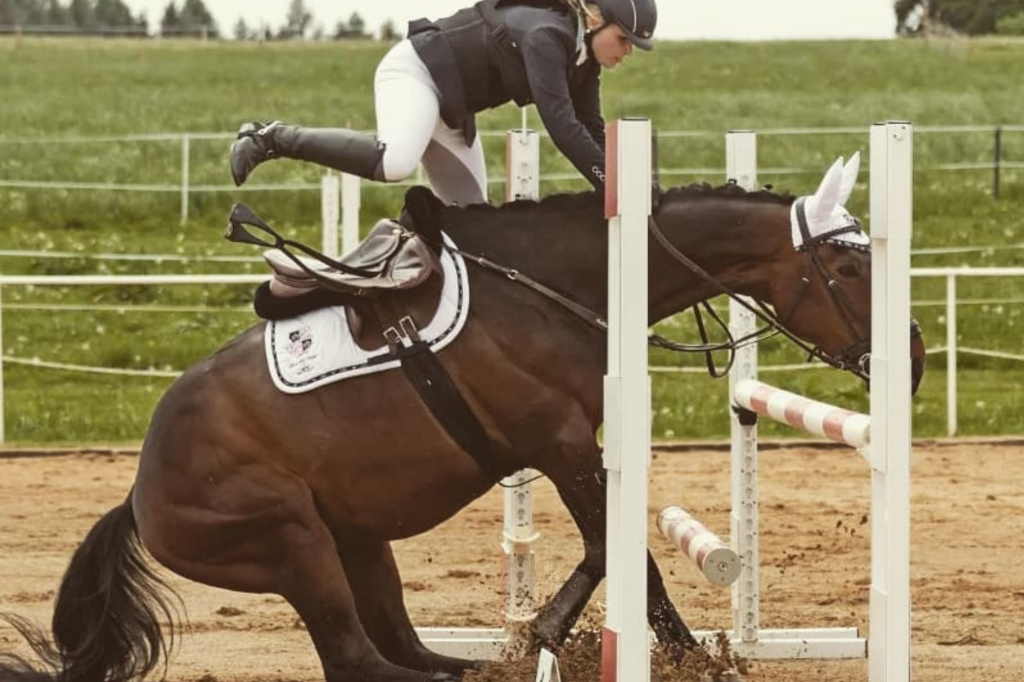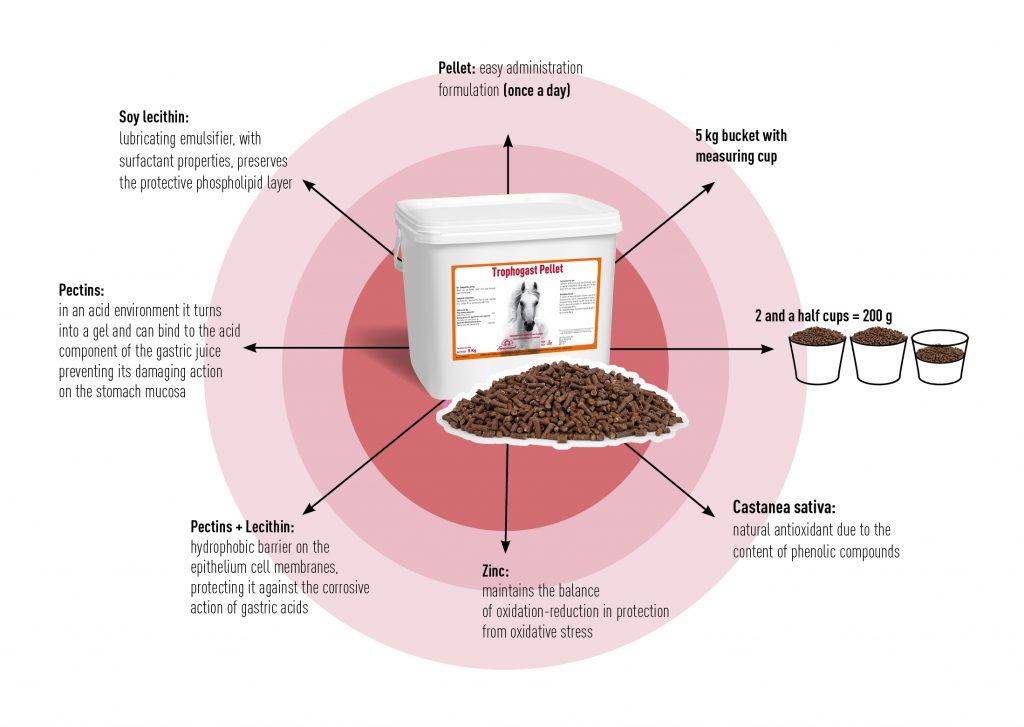Gastric ulcer in horses

The wellbeing of the horse’s joints
22 November 2021
The Orphan Foal: Management and Feeding
28 March 2022Gastric ulcer in horses

Feed management and limiting stress reactions: Equiplanet’s advice
Every horseman knows that stress can have a considerable impact on the athletic performance of his horse, but sometimes he underestimates its manifestations. Nervousness and agitation, for example, are always attributed to the temperament of the subject, but it is never thought that the origin of the problem is gastric and that it manifests itself in behavioural changes.

How can I know if my horse is suffering from gastritis or gastric ulcer?
The most common gastric ulcer in horses involves the squamous mucosa of the stomach, so we identify it as “Equine Squamous Gastric Disease” (ESGD). If they are not severe, they often go unnoticed because the horse shows one or more of these signs: matted coat, yawning, smelling faeces, capricious appetite and poor performances. These signs are often mistakenly attributed to the increase in environmental temperatures, because the period in which they occur most frequently is the spring-summer period, when in reality there are more intense sport activities with a large number of competitions.

What are the main causes of gastric ulcer in horses?

The main causes of gastric ulcer in horses are due to stressful events (transport, strenuous exercise) routine natural events (weaning, separation from the herd, change of owner) that are dealt with inappropriately or feeding errors. Frequent management errors include diets too rich in grain, prolonged fasting and lack of good quality hay.
Gastric ulcer: are all horses affected by this syndrome?

A British retrospective study reported that 54% of walking horses and 64% of sport horses are prone to ulcers. The presence of these lesions, in the collective equestrian imagination, is attributed almost exclusively to the racehorse, whose prevalence is in fact close to 100% during competition periods.
What can I do to help my horse avoid stomach mucosal changes such as gastric ulcer?

From an ethological point of view, it is advisable to keep horses in paddocks as much as possible, to avoid stabling for long periods and to let them be in contact with other animals, since in nature the horse is a social animal, used to living in a herd.
Can nutrition help counteract the onset of gastric ulcer in horses?
There are nutritional tricks that are useful such as feeding hay ad libitum. Slow feeding nets can be used in the evening to hang in the box; they allow a slower intake of feed, preventing the horse from starving during the night. Care should also be taken to divide concentrates into several meals to be fed after hay. Preference should be given to low starch feeds that contain gastric as well as muscular acidity, preventing the production and build-up of lactic acid.

Are there any particular products to supplement the diet with?
There are complementary feeds that can be included in the diet to protect the gastric mucosa and promote its normal physiology. A horse that is stressed or engaged in intense training and competition should have diets supplemented with such products. They can be given in cycles, which should last at least 25-30 days each.
What solutions does Equiplanet offer?

Equiplanet has been involved in the nutrition of sport horses for over 20 years, with particular attention to their well-being. In the Tecnozoo factory, of which Equiplanet is a brand, we produce feeds such as Fat Fiber with reduced starch content and Trophogast Pellet. Trophogast is a complementary feed based on pectins, lecithin and Castanea Sativa extract and is recommended for supporting the horse’s gastric muscle. Its efficacy in promoting the healing of moderate ulcers has recently been successfully tested on endurance horses in full sporting activity in a study conducted by the University of Milan – Department of Veterinary Medicine.
How was the Trophogast Pellet study carried out?
Fifteen endurance horses from three stables were recruited for the study and randomly assigned to one of two groups (T = treatment, C = control). The treatment group received Trophogast Pellet for 30 days together with management changes (feeding, access to the paddock, availability of hay…). The control group underwent only one management change. All horses in the study underwent gastroscopy at day 0 and were scored according to stomach mucosal lesions. At day 30 the gastroscopic examination was repeated and found to be statistically significant improvement in the T group.


